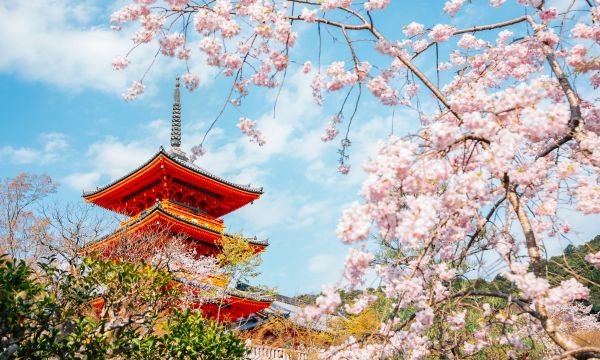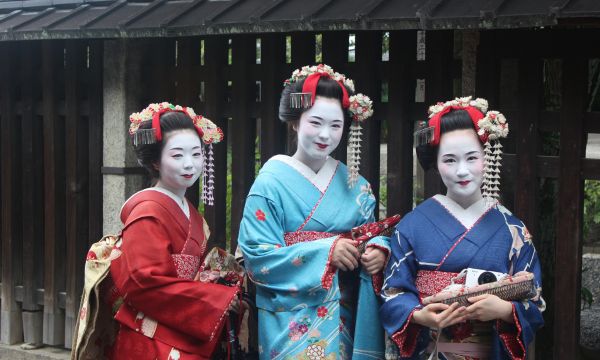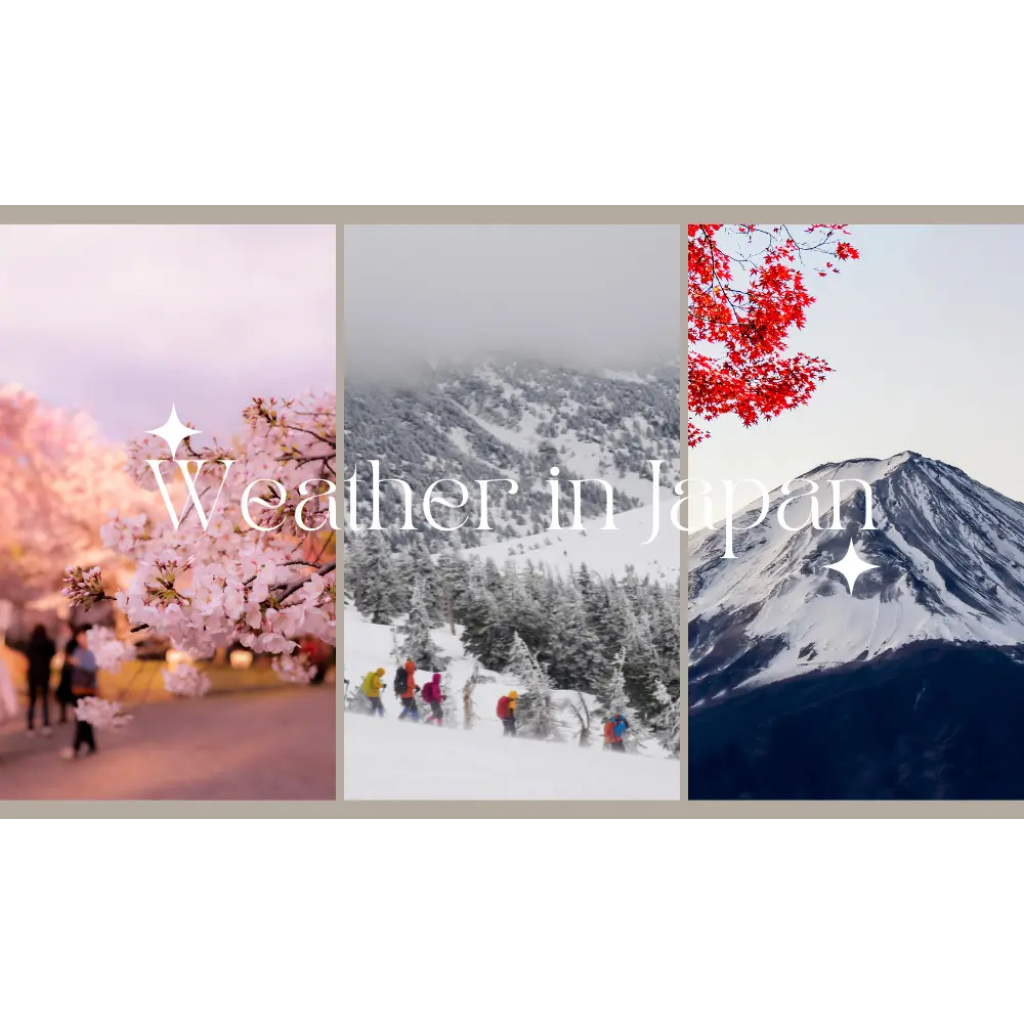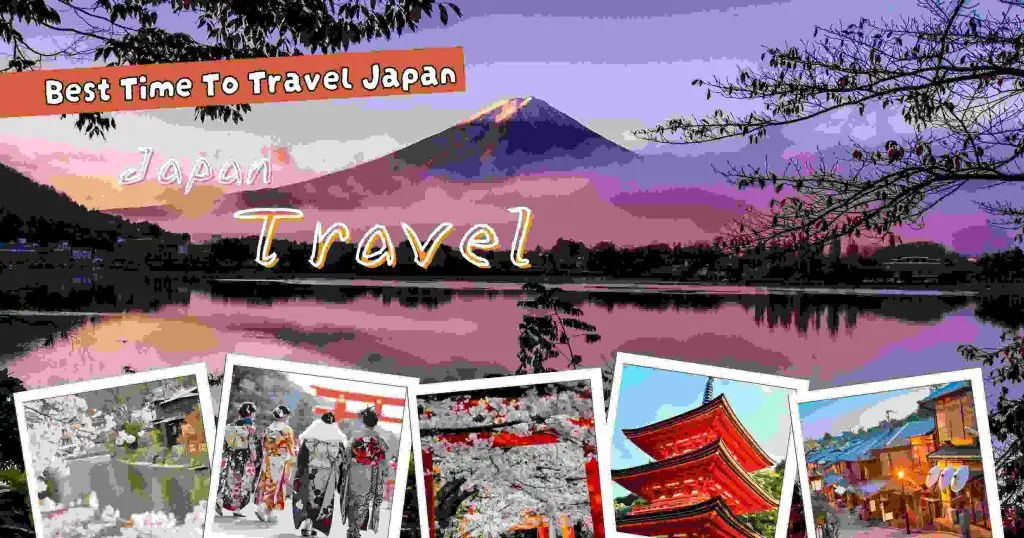How to Plan the Perfect Japan Trip During Cherry Blossom Season
Introduction: You’ve always dreamed of seeing Japan’s famous cherry blossoms. You’ve seen the photos—soft pink petals falling like snow, families picnicking under trees, parks glowing in the spring light. But every time you think of booking your trip, questions pop up: When is the best time to go? Where should I stay? How crowded will it be? Will I even catch the full bloom? Planning a Japan trip during cherry blossom season, also known as Sakura season, isn’t as easy as picking a week and packing your bags. Cherry blossoms only bloom for a short time, and missing them by even a few days could change your whole experience. Why Planning Your Cherry Blossom Trip Needs More Than Just Luck You’ve seen the photos. Soft pink cherry blossoms falling like snow, couples strolling under ancient trees, and picnic mats stretched across parks packed with happy faces. It looks peaceful. Magical. But if you’ve ever tried to plan a trip to Japan during cherry blossom season, you know it’s not as simple as booking a flight and hoping for the best. The flowers bloom for just a short window, and that window changes every year. Flights fill up fast. Hotels sell out. And if your timing is off by even a few days, you might miss the full bloom altogether. Planning the perfect Japan trip during the Sakura season isn’t about luck—it’s about strategy, timing, and knowing exactly what to do. This guide will walk you through every step, so you don’t just hope to catch the blossoms—you’ll do it. Why Planning a Japan Trip During Cherry Blossom Season Takes More Than Just a Wish The cherry blossom season in Japan is one of the most beautiful times of the year. For a few short weeks, parks, temples, and riversides across the country turn pink and white with blooming sakura trees. It’s a dream trip for many travellers. You’ve probably seen photos online or in travel magazines—people having picnics under cherry trees, couples in traditional dress, soft petals floating through the air. It looks perfect. But planning the perfect Japan trip during cherry blossom season isn’t easy. Cherry blossoms only bloom for about one week in each city. The exact timing changes every year, depending on the weather. Some tourists arrive too early and see nothing of interest. Others come too late and find petals already on the ground. That’s not the only challenge. Flights and hotels are more expensive. Popular viewing spots get very crowded. And without a clear plan, it’s easy to feel overwhelmed. If you want to see the cherry blossoms at their best—and enjoy the trip without stress—you need a brilliant plan. In this guide, we’ll show you exactly how to do that. From picking the best cities and timing your visit to saving money and avoiding crowds, you’ll learn everything you need to plan your cherry blossom trip the right way. Why It Matters Japan’s cherry blossom season is one of the busiest travel times in the country. Millions of tourists—both domestic and international—flock to famous viewing spots. Flights get expensive. Hotels fill up months in advance. The blooming schedule changes slightly every year, depending on the weather. According to the Japan Meteorological Corporation, bloom dates can shift by a week depending on temperature changes. That means even if you plan perfectly, arriving too early or too late can leave you staring at bare branches or scattered petals on the ground. On top of that, trying to explore Japan during peak season without a plan can lead to frustration: Long lines at tourist sites Crowded trains Expensive last-minute hotel rates Confusing travel routes if you don’t speak Japanese If you don’t plan wisely, your dream cherry blossom trip could turn into a stressful experience. Smart Tech Tips for Travelers During Cherry Blossom Season Using the right apps and tools can save you time, reduce stress, and help you stay updated with cherry blossom forecasts. Must-Have Travel Apps: Google Maps: Real-time navigation, train routes, and walking paths. Japan Travel by Navitime: Detailed transit app tailored to tourists. Supports English. Sakura Navi: Tracks cherry blossom blooming status by location. Google Translate: The camera function instantly translates menus and signs. LINE: Japan’s most used messaging app, helpful for local communication. Festivals and Events During Cherry Blossom Season Cherry blossom season overlaps with dozens of spring festivals across Japan. If timed well, you can join cultural experiences with the blooms. Popular Sakura Festivals: Hirosaki Cherry Blossom Festival (Aomori): Over 2,500 trees, food stalls, and boat rides. Ueno Cherry Blossom Festival (Tokyo): Paper lanterns light up the park at night. Maruyama Park Festival (Kyoto): Enjoy nighttime viewing (yozakura) accompanied by traditional music. Takato Castle Ruins Park Festival (Nagano): Ranked among Japan’s top 3 cherry blossom spots. Tip: Most festivals are free and family-friendly. Understanding the Cultural Meaning of Sakura Cherry blossoms aren’t just beautiful—they carry deep cultural meaning in Japanese life. Symbolism: Impermanence: Sakura symbolizes the brevity and beauty of life. New Beginnings: The blooming coincides with Japan’s school and fiscal year (April). Mindfulness: Hanami encourages people to pause and appreciate the present moment. Alternative Routes for Return Travelers or Off-the-Beaten Path Explorers If you’ve visited Tokyo or Kyoto before—or want fewer tourists—explore alternative Sakura routes. Lesser-Known Gems: Matsumoto (Nagano): Cherry blossoms with mountain backdrops. Kakunodate (Akita): Samurai district lined with weeping cherry trees. Himeji Castle (Hyogo): UNESCO site surrounded by over 1,000 trees. Yoshino (Nara Prefecture): Over 30,000 cherry trees across the hills. These areas offer: Fewer crowds Local ryokan stays More affordable accommodations Unique food experiences Budget-Saving Hacks for Cherry Blossom Travel 1. Use Convenience Stores Japan’s 7-Eleven, Lawson, and FamilyMart offer: Fresh bento meals (from ¥300–500) Sakura-themed snacks ATMs with international cards 2. Travel with Regional Rail Passes If not using a JR Pass, regional passes are cheaper: Kansai Area Pass Tokyo Wide Pass Kyushu Rail Pass 3. Combine Flights + Hotels with Bundles Websites like Expedia or Japanican offer










